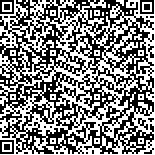| 摘要: |
| 苏禄海和苏拉威西海是内孤立波频发海域,本文基于2016年10月至2019年9月的中分辨率成像光谱仪(Moderate-resolution Imaging Spectroradiometer,MODIS)和可见光红外成像辐射计(Visible Infrared Imaging Radiometer,VIIRS)光学遥感数据开展了苏禄海和苏拉威西海的内孤立波特征分析研究。空间分布特征表明,苏禄群岛的西北部海域(118°—121°E,6°—10°N)和苏拉威西海南部海域为内孤立波多发区域。苏拉威西海南部海域存在南向和西向交叉传播的内孤立波。苏禄海和苏拉威西海的内孤立波波峰线最长可达400—500km,主要集中在100—150km范围内。利用射线追踪法结合遥感图像分析表明,锡布图岛和锡穆努尔岛附近海域存在4个内波发生源,生成的内孤立波分别向苏禄海的西北方向和苏拉威海的东南方向传播。遥感观测表明苏拉威西海也存在自东向西传播的内孤立波,共有3个发生源,位于邦加岛与比亚罗岛附近海域。苏禄海的内孤立波主要向西北方向传播,其传播速度在2m/s左右。苏拉威西海自东向西传播的内孤立波的速度在3.1m/s左右,自北向南传播的内孤立波的速度为3.0m/s左右。 |
| 关键词: 内孤立波 苏禄海 拉威西海 MODIS VIIRS |
| DOI:10.11693/hyhz20200100027 |
| 分类号:P731.24 |
| 基金项目:中国科学院先导科技专项,XDA19060101号,XDA19090103号,XDB42000000号;国家青年自然科学基金,41906157号,41604200号;山东省重大创新工程,2019JZZY010102号 |
|
| CHARACTERISTICS ON INTERNAL SOLITARY WAVES IN THE SULU-CELEBES SEA BASED ON MODIS AND VIIRS REMOTE SENSING IMAGES |
|
ZHANG Tao1,2, ZHANG Xu-Dong2
|
|
1.College of Geomatics, Shandong University of Science and Technology, Qingdao 266590, China;2.Institute of Oceanology, Chinese Academy of Sciences, Qingdao 266071, China
|
| Abstract: |
| Internal solitary waves (ISWs) are frequently observed in the Sulu Sea and the Celebes Sea. Based on MODIS and VIIRS optical remote sensing images from October 2016 to September 2019, the characteristics of ISWs in the areas were studied. The spatial distribution characteristics show that the northwest area of the Sulu Islands (118°—121°E, 6°—10°N) was the sea area where ISWs occur most frequently in the Sulu Sea. Multiple ISW packets and cross-propagation ISWs were observed in the southern Celebes Sea. The maximum length of ISWs crest in the Sulu Sea and the Celebes Sea reached 400—500km, located mainly between 100km and 150km. The ray-tracing method combined with remote sensing image observations shows that there were four primary generation sources in the Sulu Sea and three in the Celebes Sea. ISWs generated in the area around Sibutu and Simunur Islands traveled to the northwest of the Sulu Sea and the southeast of the Celebes Sea, respectively. Remote sensing observations also find westward propagation ISWs in the Celebes Sea, which were generated in the areas around Bangka Island and Biaro Island. The ISWs in the Sulu Sea mainly traveled to the northwest, with a velocity of 2.0m/s. The velocity of ISWs propagating from the east to the west in the Celebes Sea was about 3.1m/s, while for ISWs propagating from the north to the south was about 3.0m/s. |
| Key words: internal solitary wave Sulu Sea Celebes Sea MODIS VIIRS |
